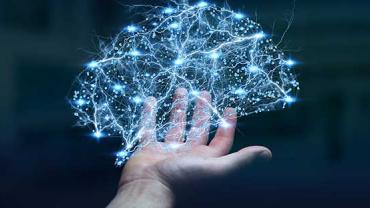
When it comes to vitamins and minerals, most medical and nutrition professionals can name roles for various nutrients off the top of their heads. Vitamin A, for example, for eye health, or chromium for blood sugar regulation. But what about manganese? Mention this mineral and even the professionals may look like deer in headlights. Considering it’s the fifth most abundant metal in the environment and is present in all living organisms as well as in rocks, soil, water, and food, most of us know surprisingly little about it. Manganese doesn’t get much press, although we tried to do our part through taking a closer look at its roles in human biochemistry and physiology in a past article.
This time, we’ll focus specifically on manganese and neuronal health and neurological function. Manganese plays a crucial role in cellular energy generation throughout the body because it’s essential for the enzyme manganese superoxide dismutase (MnSOD), the principal antioxidant enzyme in mitochondria. Superoxide radicals are one type of reactive oxygen species generated in mitochondria from the running of the electron transport system, and MnSOD catalyzes the conversion of superoxide to hydrogen peroxide, which is then neutralized by other enzymes, such as catalase. Manganese is also needed for gluconeogenesis as an activator of the pyruvate carboxylase enzyme as well as in the Krebs cycle, where it serves as a cofactor for isocitrate dehydrogenase.
Clearly, manganese is something we want to have an ample supply of, but as it was phrased in an article from Oregon State University’s Linus Pauling Institute, “Manganese is a mineral element that is both nutritionally essential and potentially toxic.” As is true for water, oxygen, and most vitamins and minerals, it’s possible to get too much of a good thing. Indeed, as is the case for most essential metals, researchers have identified an inverted U-shaped curve for manganese, wherein there’s a “sweet spot” with both insufficient and excessive levels contributing to reduced cognitive ability.
Manganese obviously plays at least some role in neurological function, because excessive exposure to high doses of manganese may result in manganism, a condition that presents as psychological or emotional disturbances and motor symptoms reminiscent of Parkinson’s disease, such as tremor, gait disturbance, rigidity and bradykinesia, with some of these symptoms being irreversible. The central nervous system (CNS) may be especially susceptible to manganese toxicity because manganese readily enters the CNS and its accumulation is favored. Alterations have been observed in glutamatergic and GABAergic neurotransmission, but the dopaminergic system is the most powerfully affected, which may explain the similarity to Parkinsonism. Iron deficiency anemia may facilitate the absorption of manganese, since these two metals have similar properties and low iron status may increase manganese uptake.
In the CNS, manganese is a cofactor for glutamine synthetase, which is preferentially localized in astrocytes. In the neuronal urea cycle, manganese is a cofactor for arginase, which hydrolyzes arginine into ornithine and urea. Research indicates that, unlike some enzymes that require metal ion cofactors, arginase cannot function properly using other divalent ions with similar properties in place of manganese. Animal models suggest that low levels of manganese leading to reduced striatal arginase activity may play a role in the pathophysiology of Huntington’s disease.
Manganese is found in a wide variety of foods such as rice, nuts and seeds, legumes and whole grains, as well as seafood, chocolate, tea, soybeans, leafy green vegetables and certain fruits. The body absorbs only a small fraction of the manganese in foods, however (about 3-5%), and as long as liver function is not impaired, manganese is excreted efficiently via bile.
Manganese appears to be a bit of a nutritional Jekyll and Hyde: an essential element for several enzymatic reactions, but one that needs to be kept in check so as not to trigger its dangerous side.